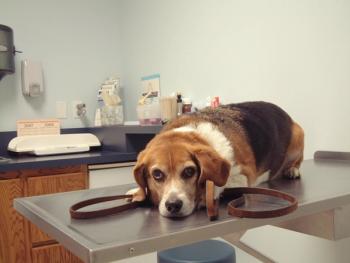
Technicians: What you need to know about these special veterinary patients.

Veterinary specialist says this service is great for patients and as a revenue stream.

Reviews are such a dreaded topic, but to veterinarian Caitlin DeWilde they dont have to be.

The advantages of a left lateral projection.

Protect your practice inside and out with these steps.

The WVLDI crew demonstrates the game.

These parasites are busy, veterinarian says.

What looks good in planning doesn't always work out in practice.

If your message says 'Happy New Year 2013' it's time get up to speed.

Discussing all natural, organic parasite preventives with clients and general practitioners.

Easily understandable advice on choosing a veterinary behavior professional.

The parallel between reviews and your online ranking explained.

Human medicine provides a cautionary tale.

A panel discussion from ACVC 2018 featured Jeff Young, DVM, Adam Christman, DVM, MBA, and Liz Hughston, MEd, RVT, CVT, VTS, debating some of the biggest topics and trends in veterinary medicine. Moderated by Nancy Shaffran, CVT, VTS (ECC).

Some clients want to be in on their pets' treatment. Like, all of it.

Instead of forming a knee-jerk opinion, start asking questions. You'll get a clearer picture of how things got the way they are.

As the first person who sees patients in the veterinary clinic you can make a difference.

Moms—who are also veterinarians—chime in on what makes this arrangement difficult.

We've moved beyond rows of straight chairs in a face off.

Bash Halow has seen the good and the bad in the exam room.

Technician specialist Mary Berg is back to share another tip on veterinary dentistry.

'We're all in it together,' says this veterinary specialist.

Michael Dicks, MS, PhD, Chief Economic Advisor at VSOP Solutions, Calico explains how private equity companies see a return on investment, and how veterinarians can compete with them.

Mark this in the sad but true news column-as things heat up on a global scale, parasites are thriving.

This VTS sees a positive trend in wages.

Elise Lacher, CPA, co-founder of Strategic Veterinary Consulting Inc., addresses ways that veterinary practice owners can blend business management with medicine.

Doug Knueven, DVM, CVA, CVC, CVCH, owner and medical director of Beaver Animal Clinic in Pennsylvania, discusses the use of acupuncture in combination with other therapies, including Western and Eastern modalities.

Make the veterinary visit so great for these patients that 'the dog will drag the pet owner through the front door' the next time.

Stop educating clients and tell them a story.